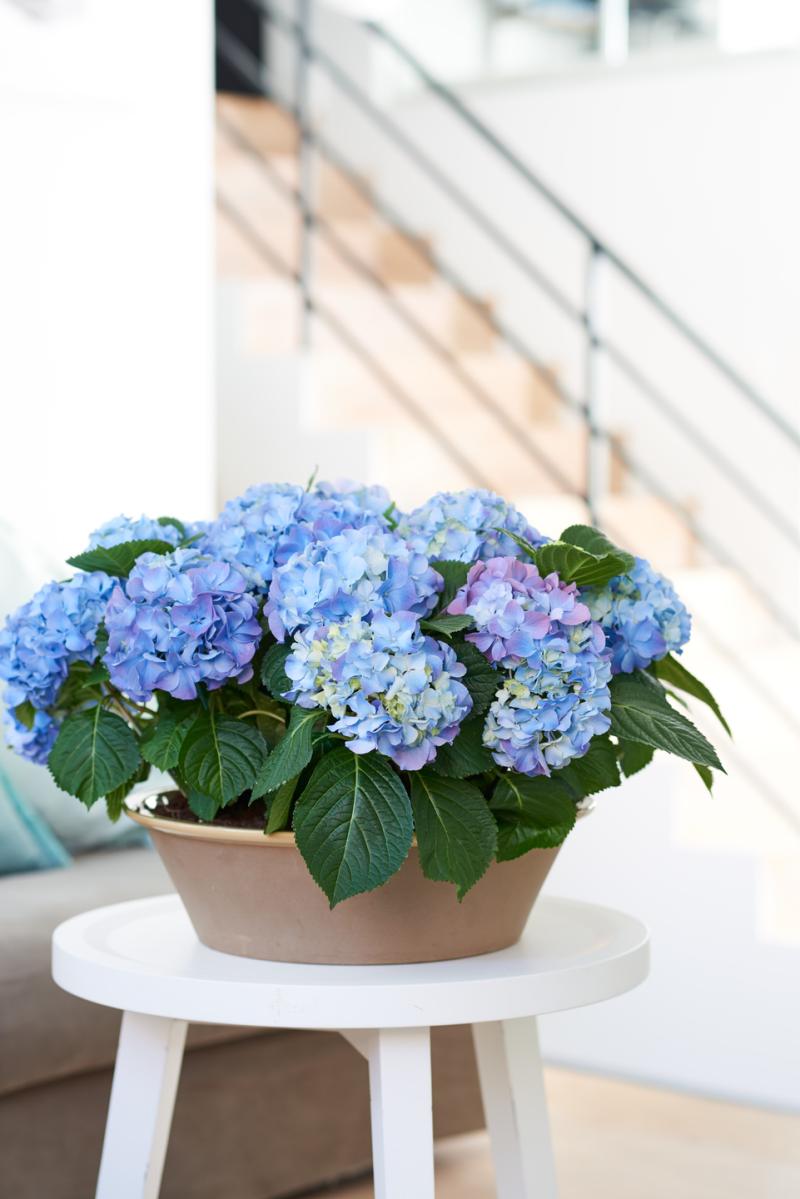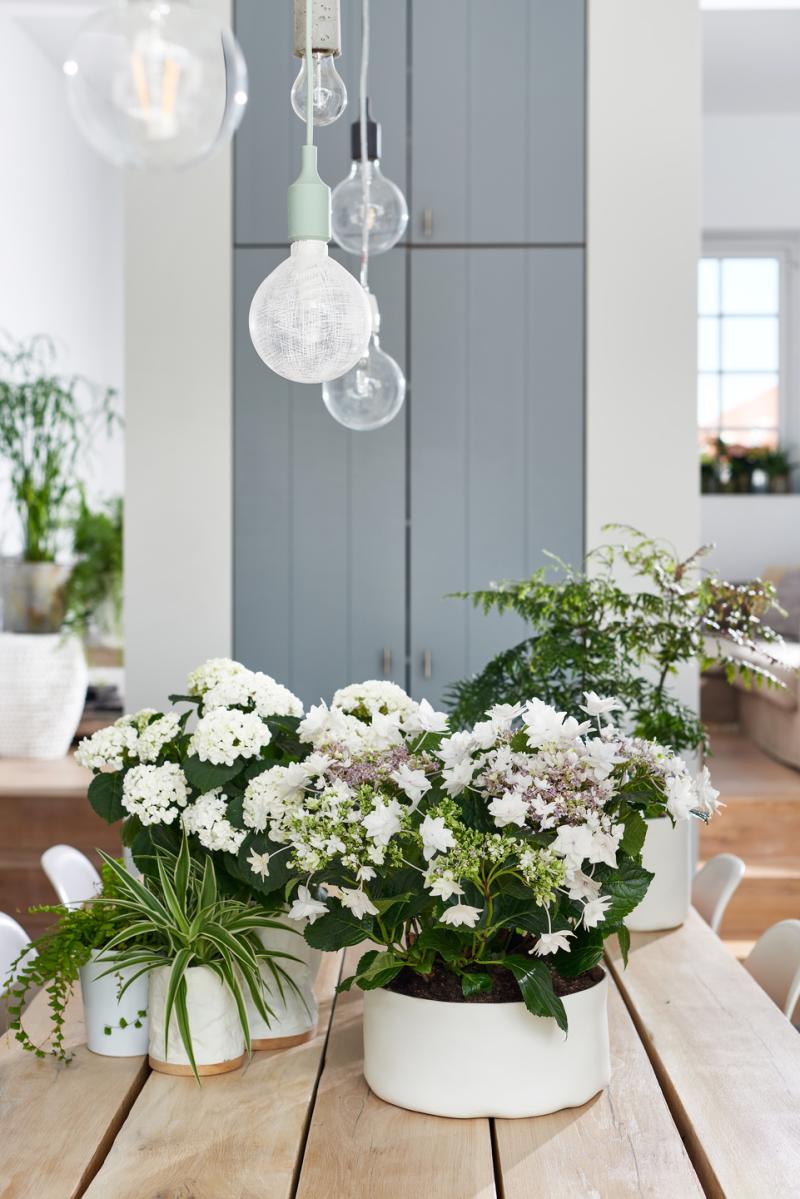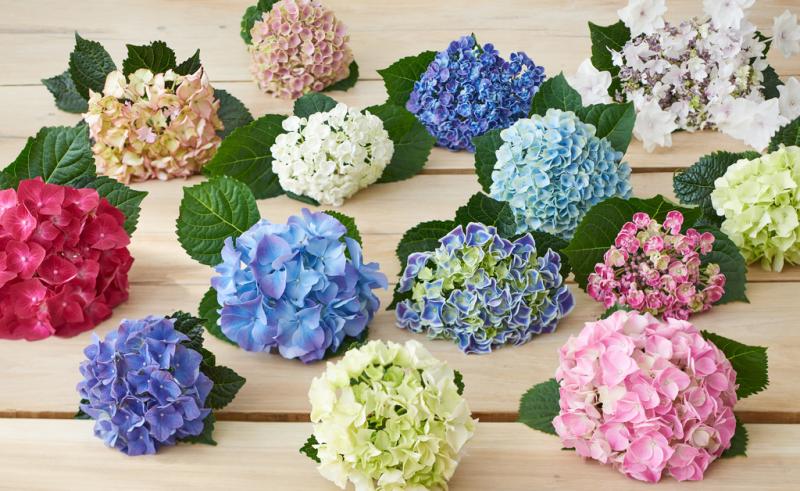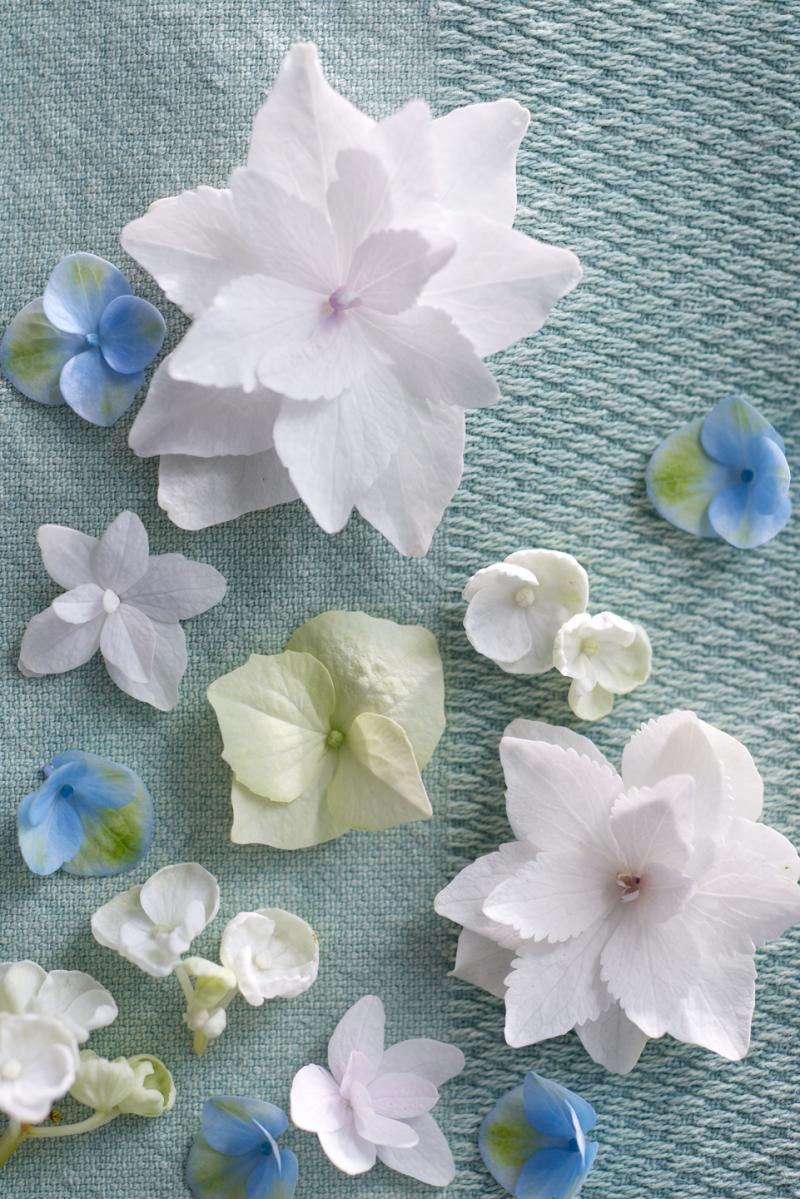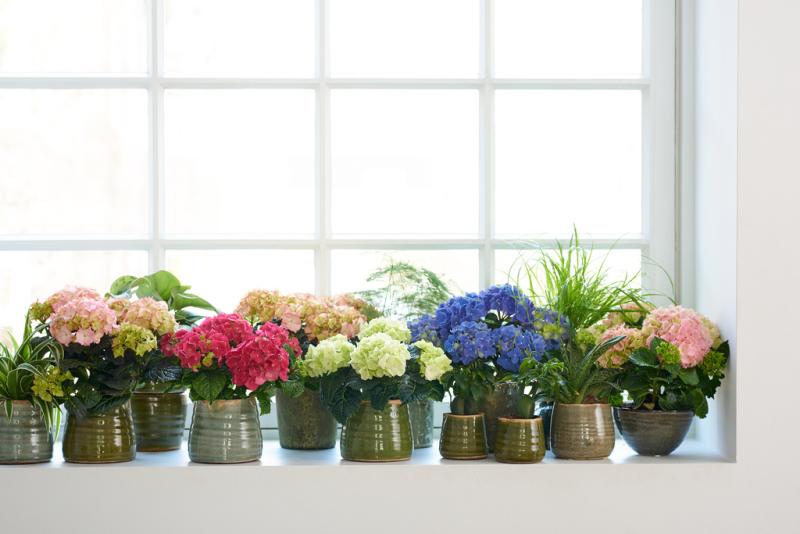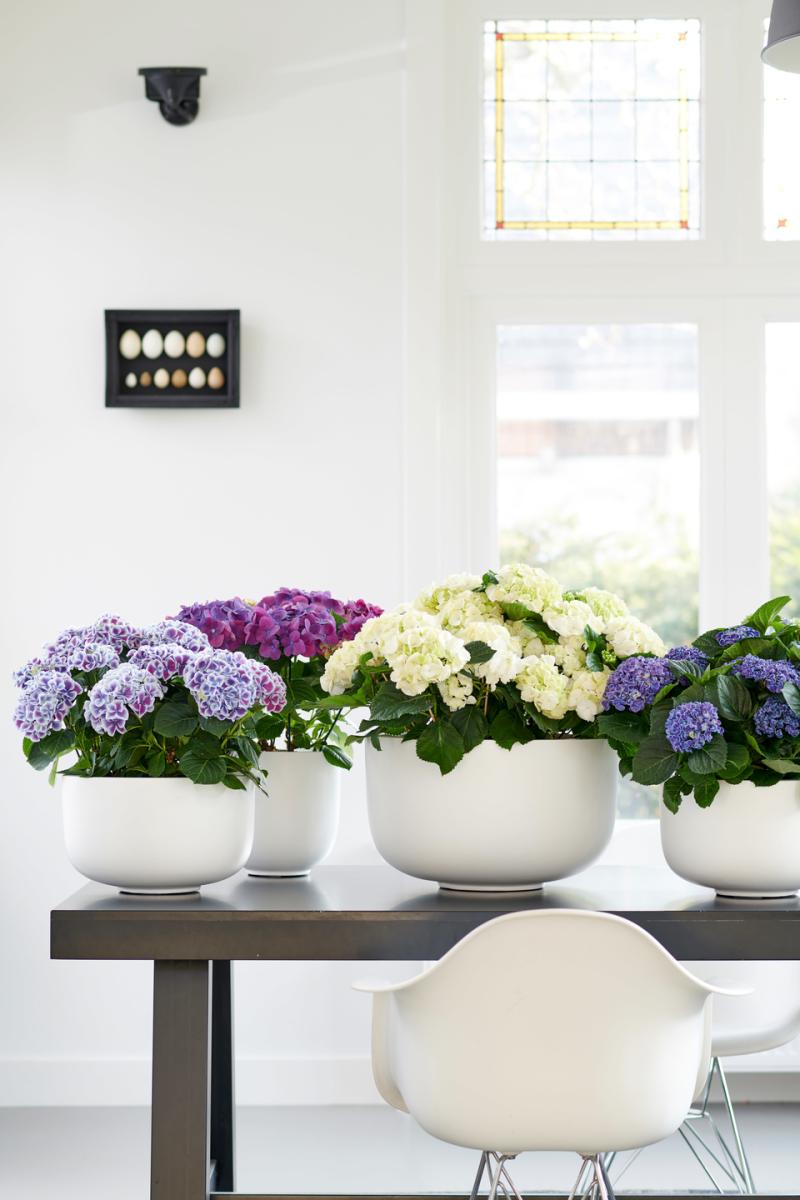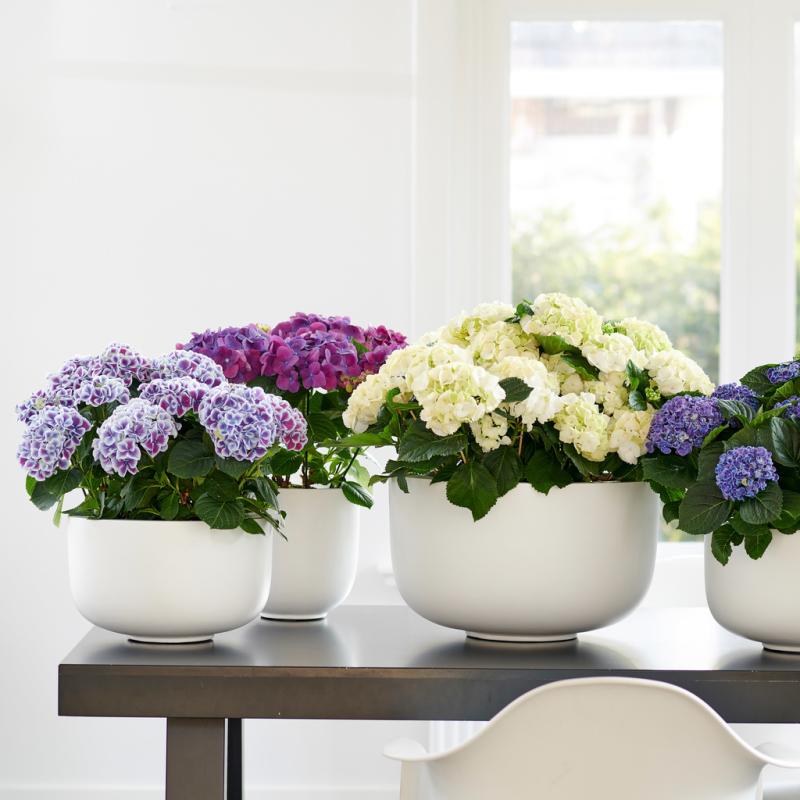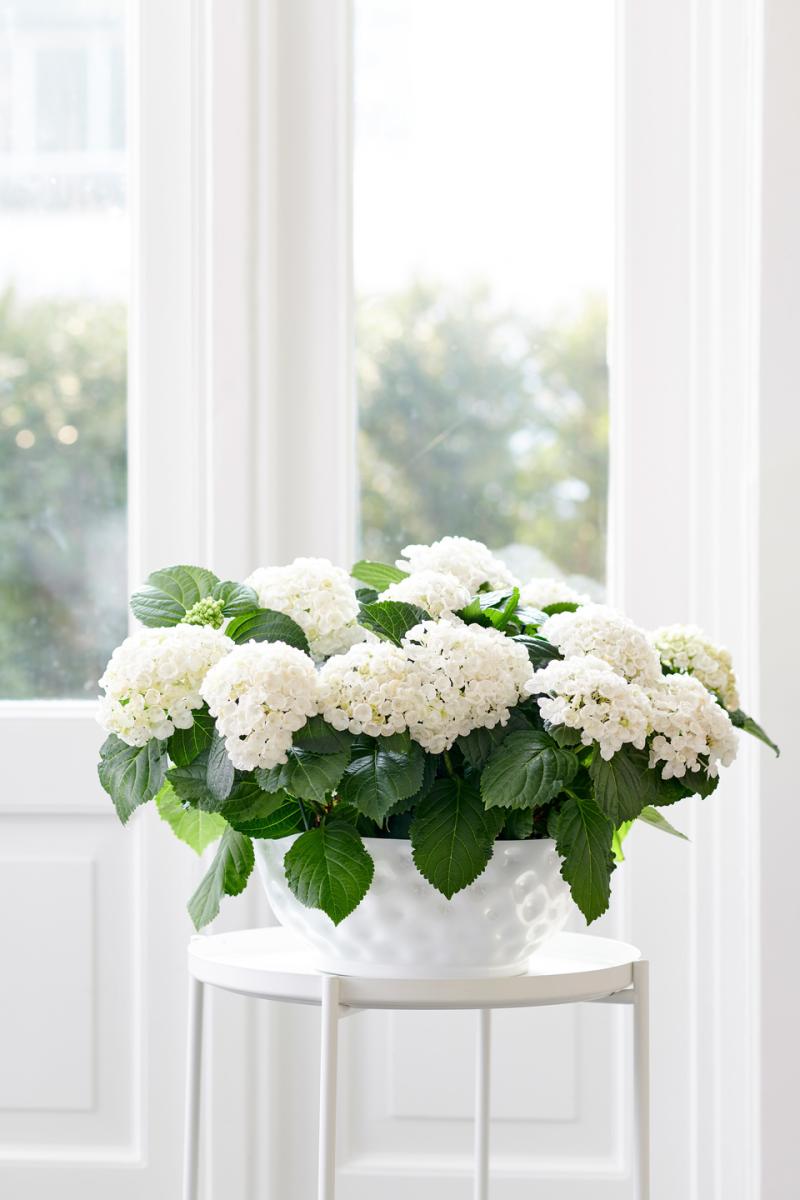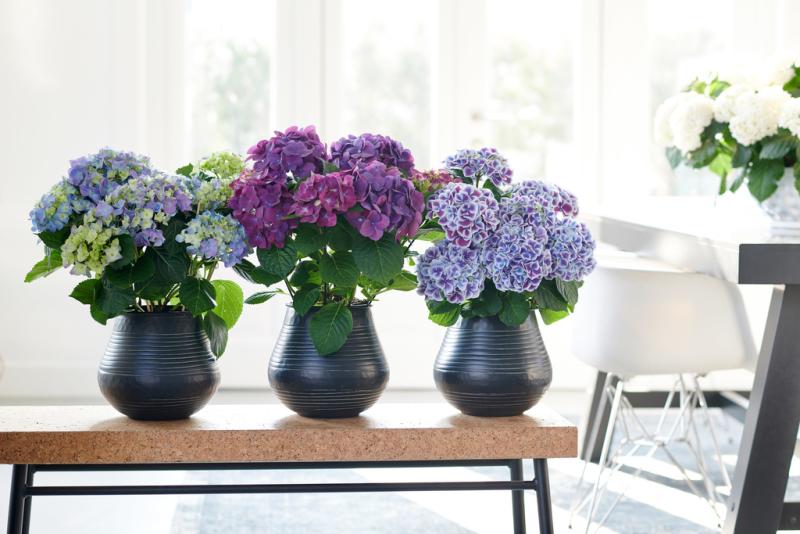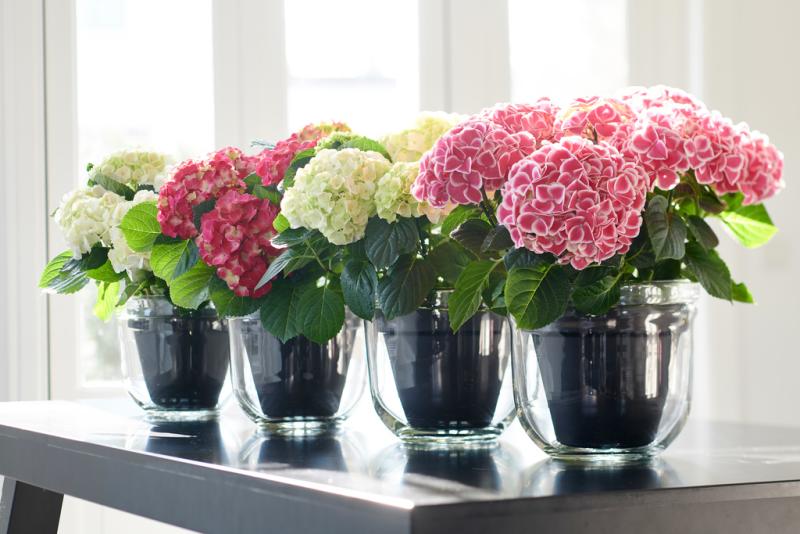Hydrangea: April 2018 Houseplant of the Month
The story of the hydrangea
Almost everyone associates the light and sweetly fragranced hydrangea with the long, light days of spring. It’s a very popular houseplant with large round umbels bursting with star-shaped flowers in fabulous colours that bloom profusely for a long time. The plant offers a decorative, cheerful and rich appearance thanks to their green leaves and is an indoor foretaste of summer, when garden hydrangeas flower. When the frosts have passed, the hydrangea can also be placed on the patio or in the garden for a second life as a garden plant.
Origin
The plant is native to South and East Asia and North and South America. Some species have developed into large trees, whilst others remain small compact shrubs. In Europe hydrangeas have traditionally often been grown near farms, where long rows grow alongside the water. The name Hydrangea refers to its most important requirement - it regularly needs water (hydra).
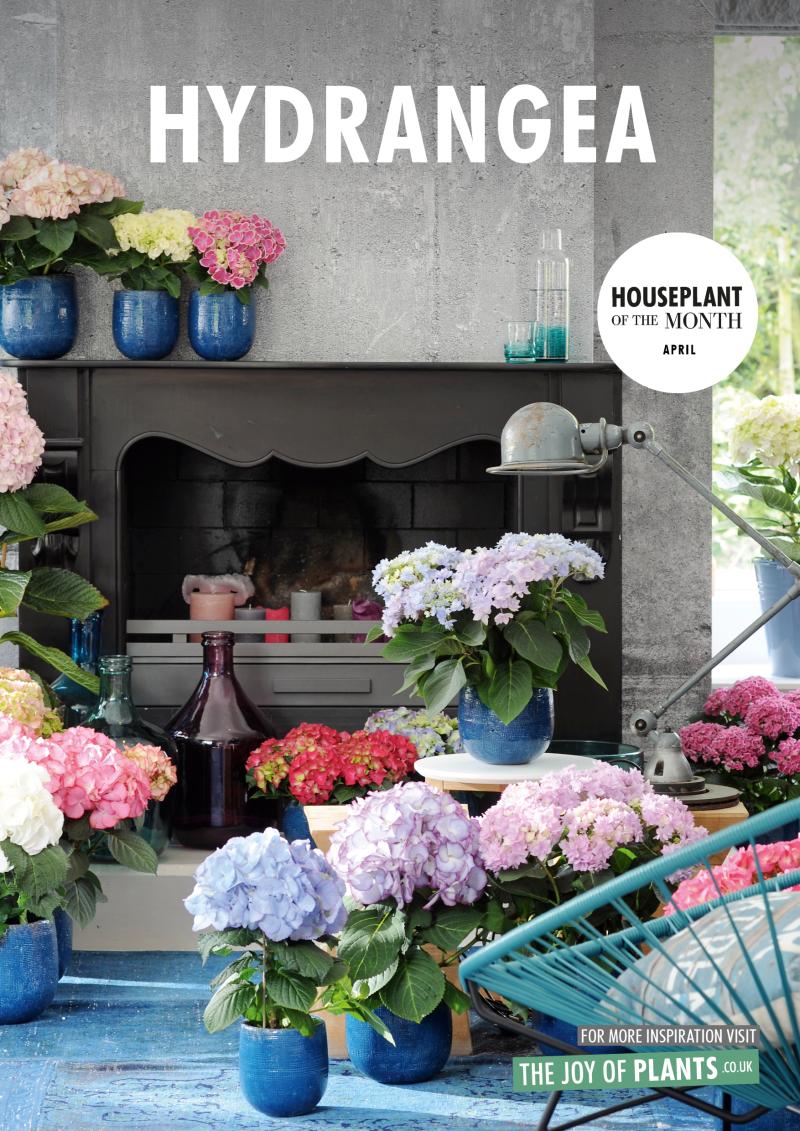
- Check that the plant’s structure is compact: a somewhat bare, stretched base indicates old growth.
- How ripe are the flowers? Ideally they should already be showing a bit of colour. Check this when buying or ask for a photo.
- It’s important that the plant is in a sleeve and the soil is sufficiently damp at the time of purchase, so that drooping and damage during shipping or storage are prevented.
- If too much moisture (condensation) remains between the leaves or under the flower for a long time, this can cause the fungus Botrytis.
Range
As a houseplant hydrangeas are available in white, green, blue, lilac, purple and various shades of pink. Notable varieties are those that change colour during flowering. A distinction is made within the hydrangea houseplant range according to the form of flowering: in globes or on the edges, the ‘lacecaps’. The plant shape can also be differentiated: standard, in hanging pots, in a pyramid shape or plants with 15 or more umbels. The smaller pot sizes are most popular indoors. Many hydrangeas are also available with about three flowers which are very suitable for small spaces in the home.
Care tips for consumers
- Hydrangeas cannot cope with drought. Avoid drooping, ensure that the plant always has slightly damp soil.
- The plant prefers a light spot, but not in direct sunlight or near a source of heat. A position that is too warm can have negative effect on flowering.
- Because the hydrangea uses a lot of energy on growing and flowering, it’s a good idea to feed with some plant food once a fortnight.
Sales and display tips for hydrangeas
When displaying the plants, play around with the various colours to give a lively look. Hydrangeas look good in black or white high-gloss pots that show off the colours even better. Bleached and white baskets and wooden containers work well in a rustic display. Providing a suitable summery background strengthens the appeal of this absolute bestseller.
Images of hydrangeas
You can download and use the images below free of charge if you credit Thejoyofplants.co.uk
Hydrangea poster
You can download the poster using the link below.
Hydrangea poster

